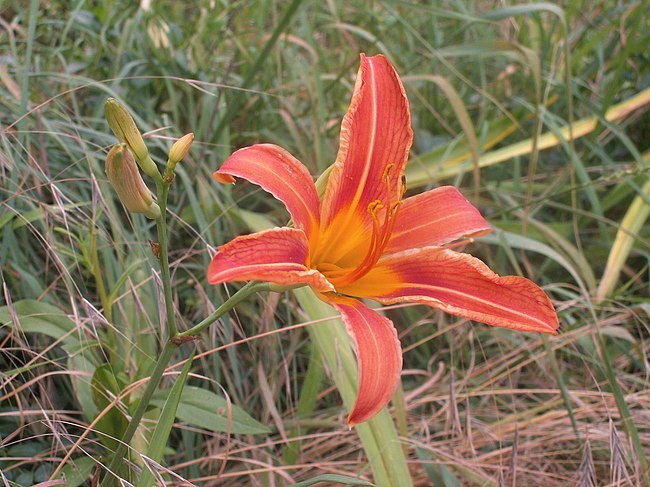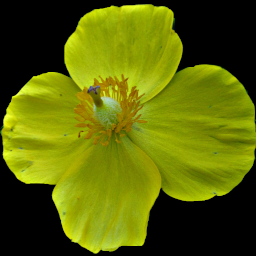
With the division of the Lily Family into many different families and even orders, modern botanists place Hemerocallis in the family Asphodelaceae in the order Asparagales.
This favorite garden perennial has naturalized itself quite successfully in western Pennsylvania, and huge colonies light up our roadsides in June. Countless variations have been bred for connoisseurs, but nothing matches the simple elegance of the original species. It is considered invasive by some people who worry about such things. These plants were blooming at the edge of an old German cemetery in Beechview.

Gray describes the genus and the species:
HEMEROCALLIS L. DAY LILY. Perianth funnel-form, lily-like; the short tube inclosing the ovary, the spreading limb 6-parted; the 6 stamens inserted on its throat. Anthers as in Lilium, but introrse. Filaments and style long and thread-like, declined and ascending; stigma simple. Capsule (at first rather fleshy) 3-angled, loculicidally 3-valved, with several black spherical seeds in each cell. Showy perennials, with fleshy-flbrous roots; the long and linear keeled leaves 2-ranked at the base of the tall scapes, which bear at the summit several bracted and large flowers; these collapse and decay after expanding for a single day (whence the name, from hemera, a day, and kallos, beauty.)
H. fulva L. (COMMON D.) Inner divisions (petals) of the tawny orange perianth wavy and obtuse. Roadsides, escaped from gardens. (Introd. from Eu.)
